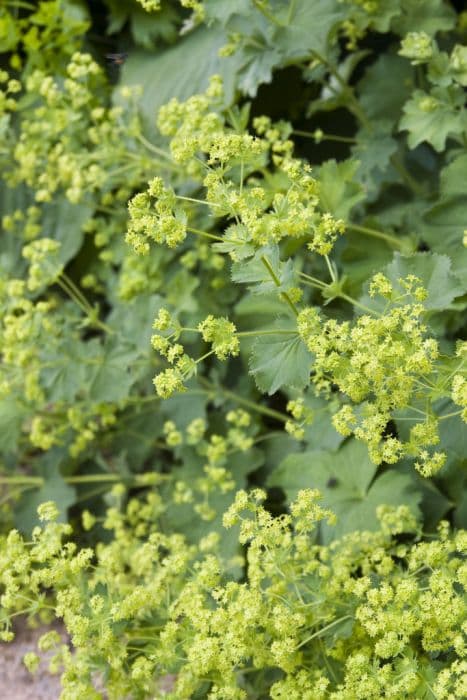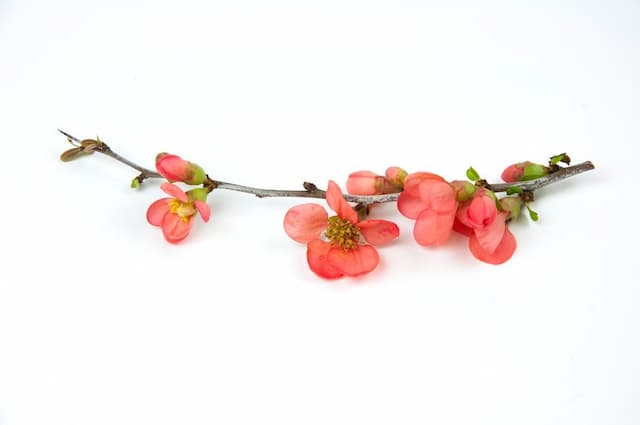Willowleaf Cotoneaster Cotoneaster salicifolius 'Avonbank'

ABOUT
Cotoneaster salicifolius 'Avonbank', known commonly as willowleaf cotoneaster, is a decorative plant that showcases a fusion of foliage, flowers, and fruits that are pleasing to the eye. Its leaves resemble those of a willow, featuring narrow and long profiles with a slightly glossy surface and a dark green color that can turn to shades of orange and red during the autumn season. Spring brings an abundance of small, attractive flowers to the willowleaf cotoneaster. These blossoms typically have a white or soft pink hue, and they cluster together in groups that create an ornamental display that can be quite striking. Following the flowering phase, the plant produces berries that contribute to its visual charm. The fruiting bodies usually take on a deep red or burgundy color and are appealing to various birds, which often visit the plant to feed on these berries. Overall, the willowleaf cotoneaster is admired for its year-round ornamental value thanks to its changing leaves, delightful flowers, and attractive berries.
About this plant
 Names
NamesFamily
Rosaceae
Synonyms
Willow-leaved Cotoneaster, Avonbank Cotoneaster
Common names
Cotoneaster salicifolius 'Avonbank'.
 Toxicity
ToxicityTo humans
Willowleaf Cotoneaster is not considered highly toxic to humans. However, ingesting its berries in large quantities can cause mild gastrointestinal upset, leading to symptoms like nausea, vomiting, and diarrhea. It is important to be cautious and avoid consuming any part of this plant.
To pets
Willowleaf Cotoneaster can be toxic to pets if ingested. The berries can cause gastrointestinal distress, leading to symptoms such as vomiting, diarrhea, and in rare cases, more severe reactions. It is best to prevent pets from eating any part of this plant.
 Characteristics
CharacteristicsLife cycle
Perennials
Foliage type
Evergreen
Color of leaves
Green
Flower color
White
Height
6-8 feet (1.8-2.4 meters)
Spread
6-10 feet (1.8-3 meters)
Plant type
Shrub
Hardiness zones
6
Native area
Asia
Benefits
 General Benefits
General Benefits- Easy to Grow: Cotoneaster salicifolius 'Avonbank' is a hardy plant that adapts well to a variety of soil types and conditions, making it ideal for both novice and experienced gardeners.
- Drought Tolerance: Once established, this cotoneaster is drought tolerant, requiring minimal watering and reducing maintenance efforts.
- Erosion Control: The dense and spreading habit of the willowleaf cotoneaster helps stabilize soil and prevent erosion on slopes and banks.
- Wildlife Attraction: The plant produces small berries that are attractive to birds, providing food for wildlife and enhancing biodiversity in the garden.
- Aesthetic Appeal: With its graceful arching branches, glossy green leaves, and white spring flowers, the willowleaf cotoneaster adds year-round interest to the landscape.
- Low Maintenance: The plant requires minimal pruning and care once established, which can save time and effort for gardeners.
- Hedges and Screens: Its dense growth habit makes it suitable for creating informal hedges or screens, offering privacy and wind protection.
- Ground Cover: Willowleaf cotoneaster can be used as a ground cover to cover large areas, suppress weeds, and reduce landscape maintenance.
- Winter Interest: The evergreen leaves and persistent red berries provide color and texture in the garden during the winter months.
 Medical Properties
Medical PropertiesThis plant is not used for medical purposes.
 Air-purifying Qualities
Air-purifying QualitiesThis plant is not specifically known for air purifying qualities.
 Other Uses
Other Uses- Wildlife Habitat: Cotoneaster 'Avonbank' provides dense cover and nesting opportunities for birds due to its thick foliage.
- Soil Erosion Control: The plant's extensive root system helps stabilize slopes and banks, preventing soil erosion.
- Bonsai: Some enthusiasts use Cotoneaster 'Avonbank' for creating bonsai due to its small leaves and attractive branching patterns.
- Winter Garden Interest: With persistent berries and semi-evergreen leaves, 'Avonbank' offers visual interest in winter gardens.
- Screening: Its dense growth habit makes it suitable for use as a living screen or hedge to provide privacy.
- Nocturnal Garden: The light-colored foliage and berries can reflect moonlight, contributing to a garden's night-time appeal.
- Photography: The plant's contrasting foliage and berries provide a picturesque subject for nature and garden photographers.
- Boundaries: 'Avonbank' can be used to delineate property lines without the need for fencing.
- Tactile Garden Element: The plant's various textures, from its leaves to its berries, can be incorporated into gardens designed for tactile interaction.
- Cultural Significance: Some gardeners use Cotoneaster 'Avonbank' to represent themes of protection and hospitality in symbolic gardening.
Interesting Facts
 Feng Shui
Feng ShuiThe Willowleaf Cotoneaster is not used in Feng Shui practice.
 Zodiac Sign Compitability
Zodiac Sign CompitabilityThe Willowleaf Cotoneaster is not used in astrology practice.
 Plant Symbolism
Plant Symbolism- Hardiness: Cotoneaster salicifolius 'Avonbank', commonly known as Willowleaf Cotoneaster, often symbolizes hardiness as it is a robust plant that can thrive in various conditions and withstand harsh climates.
- Evergreen Nature: As an evergreen, Willowleaf Cotoneaster signifies immortality and eternal life, representing perseverance and the ability to endure over time.
- Ground Cover: The plant's nature to spread across the ground as cover could also symbolize protection, safety, and nurturing, as it provides a shelter to small wildlife and protects the soil.
 Water
WaterWillowleaf cotoneaster should be watered deeply but infrequently, allowing the soil to dry out slightly between watering sessions. During the growing season, water the plant once a week with about 1-2 gallons of water per session, depending on the size of the plant and environmental conditions. In the winter months, reduce watering to once every two weeks or less, monitoring the soil moisture level and adjusting accordingly. Overwatering can lead to root rot, so it’s essential to ensure good drainage and avoid letting the plant sit in waterlogged soil.
 Light
LightWillowleaf cotoneaster thrives best in full sun to partial shade. It should be placed in a location where it receives at least six hours of sunlight daily. The ideal spot would be one that offers morning sun and some afternoon shade, especially in regions with very hot summers. However, the plant is adaptable and can tolerate a range of light conditions, though flowering and berry production may be reduced in too much shade.
 Temperature
TemperatureWillowleaf cotoneaster is hardy and can withstand a range of temperatures; it can survive minimum temperatures down to about -20 degrees Fahrenheit and is suitable for growth in USDA zones 6 through 8. The ideal temperature for this plant is between 60 and 70 degrees Fahrenheit. It can endure short periods of higher temperatures, but providing some afternoon shade in extremely hot weather can prevent stress on the plant.
 Pruning
PruningPruning willowleaf cotoneaster is vital to maintain its shape, remove any damaged or diseased branches, and encourage new growth. Prune the plant in late winter or early spring before the onset of new growth. Occasional thinning of the branches may be needed to improve air circulation. If the plant becomes too large or unruly, you can also perform rejuvenation pruning by cutting back one-third of the oldest stems to the ground.
 Cleaning
CleaningAs needed
 Soil
SoilWillowleaf Cotoneaster thrives in well-drained, loamy soil with a pH range of 6.0 to 7.5. To create the ideal soil mix, combine garden soil, compost, and coarse sand in equal parts to enhance drainage and fertility.
 Repotting
RepottingWillowleaf Cotoneaster should be repotted every 3 to 5 years, depending on its growth rate and the size of the container. Check the root system yearly for signs of becoming pot-bound.
 Humidity & Misting
Humidity & MistingWillowleaf Cotoneaster is adaptable to a wide range of humidity levels but prefers average to dry conditions. It does not require high humidity to thrive.
 Suitable locations
Suitable locationsIndoor
Ensure bright light and well-draining soil for indoor Willowleaf Cotoneaster.
Outdoor
Plant in well-drained soil with full sun to partial shade for outdoor Willowleaf Cotoneaster.
Hardiness zone
5-8 USDA
 Life cycle
Life cycleCotoneaster salicifolius 'Avonbank', commonly known as Willowleaf Cotoneaster, begins its life cycle as a seed, often spread by birds that consume the fruit. Once germinated, the young seedling establishes roots and a shoot system, gradually maturing into a dense, woody shrub with long, arching branches. As the plant matures, it produces small white or pinkish flowers in the spring, which are important for attracting pollinators. Following pollination, these flowers develop into small, red pomes (berry-like fruits), which mature by late summer or early fall, providing food for wildlife. Throughout its life, the Willowleaf Cotoneaster experiences seasonal growth cycles, with active growth in the spring and summer, followed by dormancy during the winter months. Without human intervention, this shrub can live for several decades, continuously reproducing through its fruits and contributing to the local ecosystem through its role as a habitat and food source for various species.
 Propogation
PropogationPropogation time
Spring
Cotoneaster salicifolius 'Avonbank', commonly known as Willowleaf Cotoneaster, is most effectively propagated by semi-hardwood cuttings. This technique is typically done in late summer. To propagate by cuttings, a 4 to 6 inch long piece of semi-hardwood stem from the current year's growth is selected. The lower leaves of the cutting are removed, and the cut end is dipped in a rooting hormone powder to encourage root development. The prepared cutting is then inserted into a pot filled with a well-draining potting mix, with at least two sets of leaf nodes buried in the soil. The cutting should be kept moist and in a warm environment with indirect light. Roots generally develop within a few weeks to a few months, after which the new plant can be gradually acclimated to outdoor conditions before planting it in its final location.









